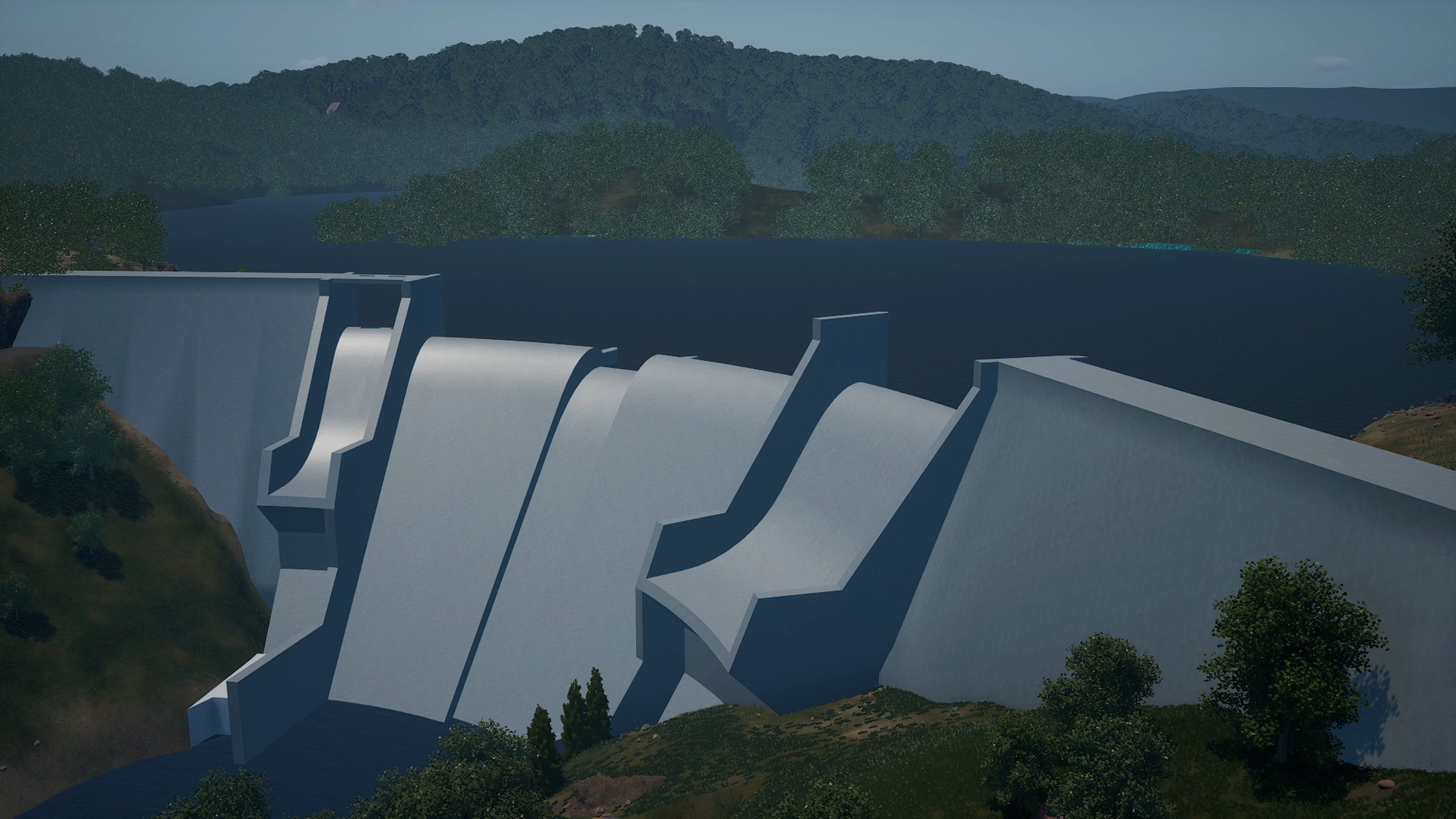South Australia’s largest reservoir is set to receive a major upgrade in coming years to meet renewed national safety standards, with SA Water revealing a proposed design to fortify Mount Bold dam to safely withstand up to a one-in-five-million-year weather event.
The 50m-high asset – one of SA Water’s tallest dams – stores and diverts water to the utility’s Happy Valley Reservoir, where it is treated and supplied to around 450,000 customers in Adelaide.
The newly proposed design outlines major augmentations, including a three-stage spillway, and SA Water Sustainable Infrastructure General Manager Amanda Lewry said the upgrade plans have been more than 10 years in the making.
“Our upgrade of Mount Bold’s dam is the culmination of years of planning and will be one of the largest capital projects in our history once completed,” she said.
Enhancing dam safety in the face of extreme weather events has been a strong focus for SA Water, Lewry said, with eight of the utility’s dams upgraded since 2002, but it’s time now to turn to the state’s largest dam to safeguard the asset in line with new guidelines.
“Mount Bold has had a lower risk when compared to other dams, and as it’s the most complex upgrade in our portfolio, that has required significant long-term planning,” she said.

“Rightly so, the refreshed national safety guidelines – set by the Australian National Committee on Large Dams – are particularly conservative and take into account the most extreme of weather scenarios to ensure we’re covering all bases.
“For us specifically at Mount Bold, we are looking at ensuring resilience in extreme flood events. But we are also looking at earthquake stability, which is a really key aspect for us in terms of the geology of the area.”
Reducing risk
SA Water’s proposed design has sought various options and solutions to ensure the upgraded dam can safely pass extreme wet weather events, but Lewry said the proposed design also includes pathways for simplifying operations to reduce risk.
“To elevate the dam’s safety, we’ll be constructing significant concrete protection downstream of the dam to reduce the risk of erosion, while strengthening the wall with new concrete to increase its capacity to withstand earthquakes and extreme flood events,” she said.
“But we’ve also looked at options to make the operation of the dam simpler to lower risk. Simplifying the operation of the dam will mean there’s less chance of something going wrong during extreme weather events.”
The proposed design features a three-stage spillway along the dam crest, with a primary spillway slot three metres wide by 5.6 metres high, which will replace a series of gates that currently control the release of water.
Lewry said the new design enables a self-managed flow release, which will provide a level of flood attenuation and ultimately minimise flooding in downstream communities.
“This is more efficient, allowing for the retention of water during extreme weather events, due to the dam’s ability to temporarily store more water and release it at a rate that’s three-times slower compared to having all the gates open,” she said.
“When the reservoir is already full, the dam’s primary spillway will [release excess water] up until around a one-in-a-hundred-year event, where the other two spillways will be activated to help release water and preserve the dam’s structural integrity.
“Inherently, this will provide the dam with a greater ability to minimise the impact to residents downstream by releasing water more steadily.”
An additional $12.7 million of funding was earlier this year secured via the local council, and the State and Federal Government to include improved flood attenuation in the conceptual design.
Testing resilience
Lewry said one of the most important aspects of developing the proposed design was ensuring a deep understanding of the assets surrounding geological and topographical make-up.
“Understanding how the dam is anchored into the surrounding earth is incredibly important because, as that geology changes, it also changes the asset’s design requirements,” she said.
“Since 2010, we’ve been methodically working through the site’s nuances, such as the surrounding geology, flood hydrology and topography, to ensure the final design achieves the greatest outcome for dam safety.
“The most notable piece of work took place in 2020 when the 46-billion-litre reservoir was gradually emptied to enable detailed investigations of the intake structure, and an upgrade of equipment used to isolate the dam’s valves and pipework.”
Lewry said the utility has also facilitated comprehensive modeling to test how the dam would perform in different scenarios, during different wet weather and earthquake events, with a focus on challenging design solutions.
“We’re always looking at challenging ourselves. We have an amazing panel made up of experts in quite specialised fields whose job it is to shine a light on our decisions. We are finding that process incredibly valuable,” she said.
“We’re now optimising our concept as part of the detailed design phase, with scope for further refinement to ensure we’re delivering a cost-effective project.”
Major construction is expected to start in coming years.